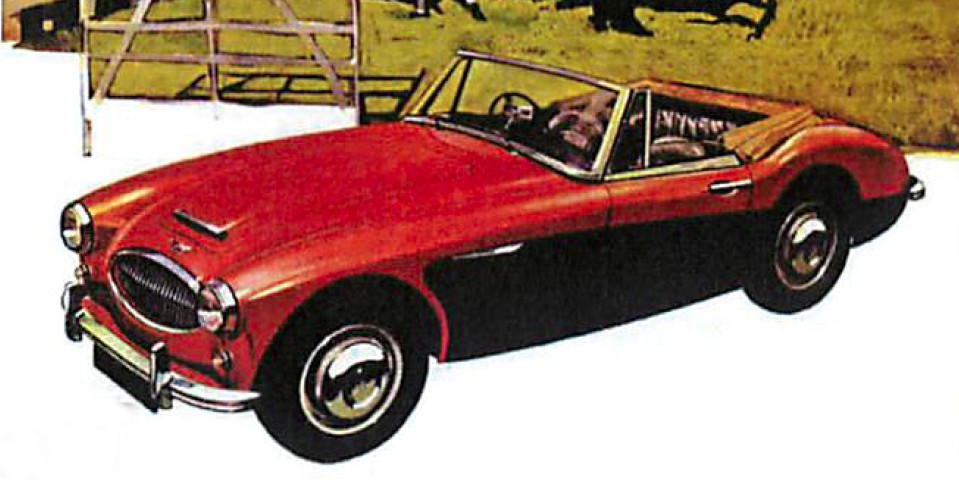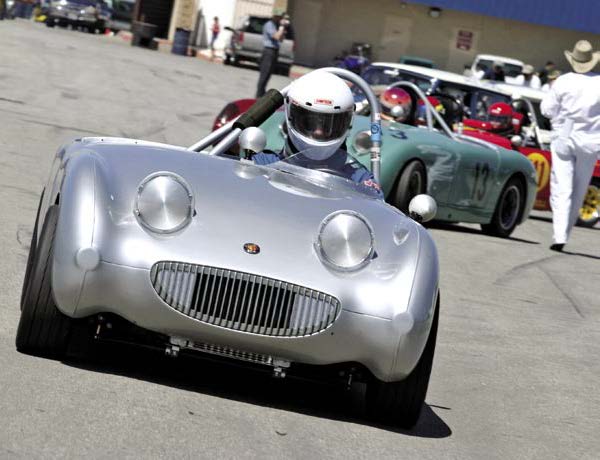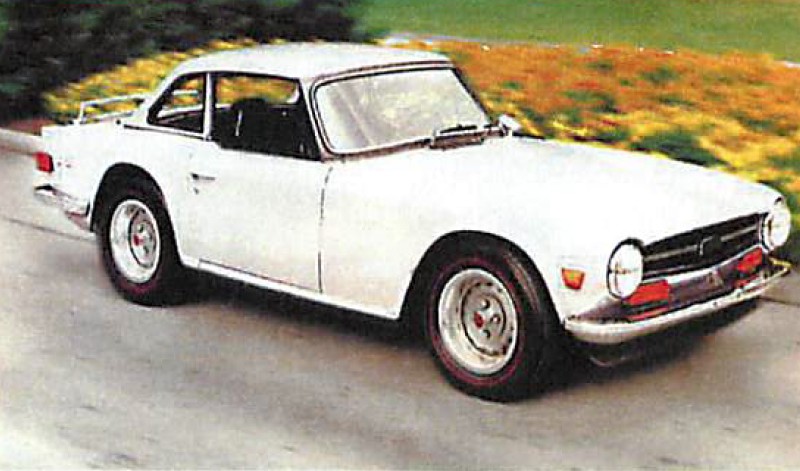Everyone loves Big Healeys: They’ve been the top-o-the-pops sportscars with Americans since the first BNI was dropped on the dock in 1953.
The car was designed and developed by British sporting-car legend Donald Healey for British Motor Corporation (BMC). Healey built some mighty fine Riley-based speciality sportsters just after WWII and worked with the American Nash company on the striking Nash Healey in the early 1950s. Healey’s amazing talent for developing reasonably priced, mass-produced, and highly competitive sportscars using existing off-the-shelf components was not fully realized until he started working on the Austin-Healey. Using pieces from the Austin—and later BMC—corporate parts bin, he created an instant classic and competitive roadster that has been admired by enthusiasts for more than 50 years.
The earliest Healeys were powered by a stout, but pedestrian, cast-iron four that at the time was being fitted to everything Austin from non-diesel London cabs to their Gypsy 4×4 (similar to a Land Rover). The twin SU carbureted version used in the first Healeys had been developed for the ill-fated Austin Atlantic, a car that looked like the bastard offspring of a bathtub and a Pontiac. This gutsy little mill, fitted to the new Healey, provided a hearty alternative to the wheezy, small-displacement engines found in most imported sportscars of the day. The Austin-Healey was always able to bridge the gap between the mighty Jags and the rest of the “little guys.”
Healeys were also popular as second-hand sportsters, making them “modern classics” rather than just “used cars.” While prices did get low enough to allow hot-rodders to cram in American V8s, values for well-maintained or restored originals were on the rise, encouraging preservation and restoration.
Big Healeys were always driven by the coolest of people and, interestingly enough, had no gender identity like other sportsters of the day. Corvettes were “guys” cars and Renault Caravelles tended to be for “chicks.” While other British car aficionados would opt for flat caps and tweed, Healey owners couldn’t care less—sportswear and Ray-Bans for them. After all, they were Healey owners.
As the years went on, changes in the Healey came parallel to development at Austin. The three-speed gearbox made way for a four-speed. In late 1956, the four-cylinder mill was replaced with a sporting version of a corporate 2.6L six that was also fitted to the fanciest of Austins, Morrises, Rileys, and Wolseleys. The displacement was upped to about three liters in 1960. The car grew roll-up windows and a full “weather-tight” top in 1963. The suspension became a bit softer and the interiors plusher as the buyers aged with their automotive interest. Those rough-and-tumble college boys had all grown up into stockbrokers and dentists who demanded a cushier ride and a more refined aura.
Good Points
Fun, fast, and sexy, the big Healey is a showcase of classic 1950s British sportscar style and verve. No prewar rickety wood framing or four-piece folding bonnets here—just clean, flowing bodywork enclosing solid, proven Austin saloon components. No tricky independent rear suspension either—just power on demand and safe, predictable handling. Healey always kept a delicate balance between backroad sports machine and highway cruiser.
Parts are relatively easy to obtain, and the car has few mechanical surprises. The value of these cars has been going up steadily over the last few years, so most people are now expecting appreciation. In fact, some sellers today seem to be charging prices that include next year’s appreciation! This might not go on forever. I’m sure that there are safer investments, but they would not be nearly as much fun.
Bad Points
The seating position is not for everyone, and drivers with long legs might find that their knees rub the steering wheel. I’ve seen this rectified with a smaller-diameter aftermarket steering wheel. For hands-on guys who like to do their own restorations, the project-car pool is getting quite small. The better cars were restored years ago, so the remainders generally need extensive work. As always, look for existing rust and sloppy body and frame repairs. Modified cars—especially with V8s—are cool and some were well done. However, consider them hot rods and value accordingly. Reasonably original cars are sought by collectors and will always be in demand.
Comments On Value
Well, they are going up. How much, is another story. A drop-dead gorgeous late-model BJ8 recently sold at a Barret-Jackson auction for $95K! So what’s that old ’64 languishing in the garage worth? Do some research. The difference between a good Healey and a needy Healey can scuttle the fun of ownership, and while all Healeys are rare, some are a lot rarer than others. The reality is that, much like land, they aren’t making Big Healey’s anymore.
Prices vary widely because the concept of condition is subjective. Sometimes sellers overestimate the condition of their cars, often more out of ignorance than larceny. Many of the really high-buck examples are restored way past original condition, and the buyer is paying for the quality and the freshness of the restoration as well as the car. Sometimes the lure of sparkling new paint and gleaming chrome wire wheels cause an auction buyer to throw caution out the window.
Best Way To Buy
We quizzed Big Healey owners on the Internet and were overwhelmed with the response. John Peak suggests, “Learn everything you can about them first. Join the clubs and the Healey [Internet] list, and be patient. There are plenty of Healeys out there for sale. Before too long the one that is right for you will turn up. Bought mine from a fellow AHCUSA member and would hope to be fortunate enough to the same for the next one.”
Tom Mitchell agrees: “Best way is through the club! I found both of mine in the paper; one was a shyster dealer (now out of business). Both cars were very rough, one was in boxes. I had blinders on, even on the second one. I didn’t see many of the faults until after I brought the car home and took off my rose-colored glasses. If I were to buy one today, I would go through the club of would take a ‘Healey knowledgable’ friend with me.”
“I’m not sure that there is an absolute ‘best way,'” says Reid Trummel, editor of Austin-Healey magazine. “But through the clubs is often a very good way. In my experience, cars owned by some of the more active club members tend to be better restored, better maintained, and tend to have better-known histories.” Magnus Karlsson from the Healey Club of Sweden warns, “Look at as many Healeys for sale as possible, and buy the one you consider to be in the best shape regardless of price (within reasonable limits of course).”
Stephen Gizzi says, “I think buying through eBay or the Classic Auto Trader can be the way to go as long as you’re Internet savvy and careful. I bought my car on eBay and hit the Healey lottery without even knowing it! After purchase, I was contacted by Steve Byers, the keeper of the Healey BJ8 registry, who informed me that mine was the very last Big Healey ever exported to the country and the nineteenth from the end of production. That many not mean much to many people, but I think it makes this car all the more special. Before bidding, I researched and found a local British car repair shop that fully inspected the car before I bought it. My bid price was probably $15,000 less than what one of the big classic dealers would have charged. I couldn’t be happier with it. Of course, I bought my most recent car, a gorgeous 1979 MGB L/E, through a classified ad in British Motoring.”
By Rick Feibusch








'British Value Guide: Big Healeys' has no comments
Be the first to comment this post!